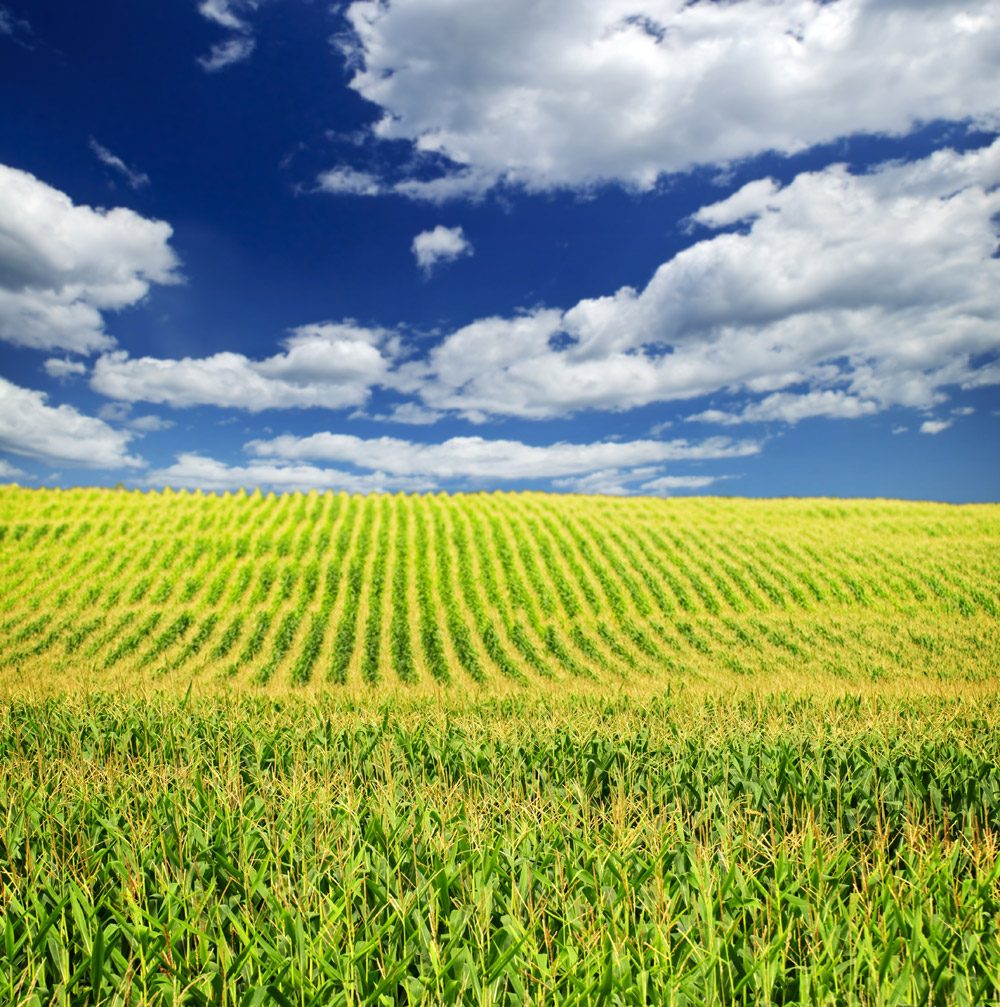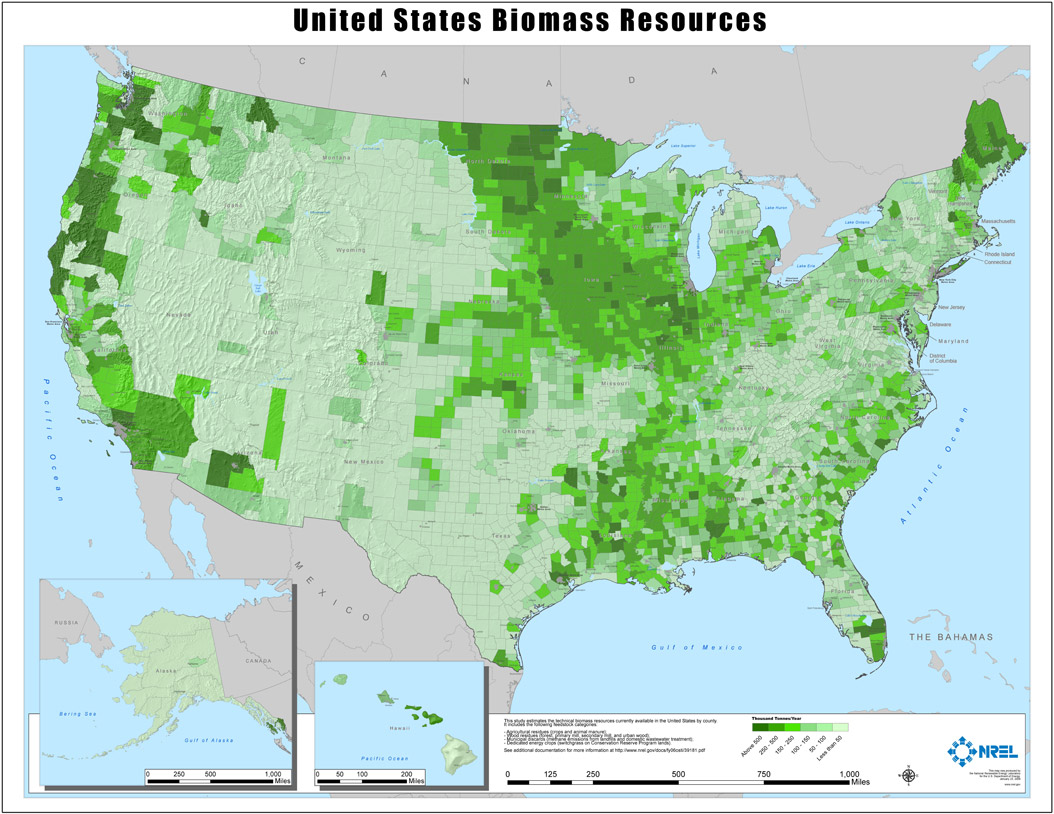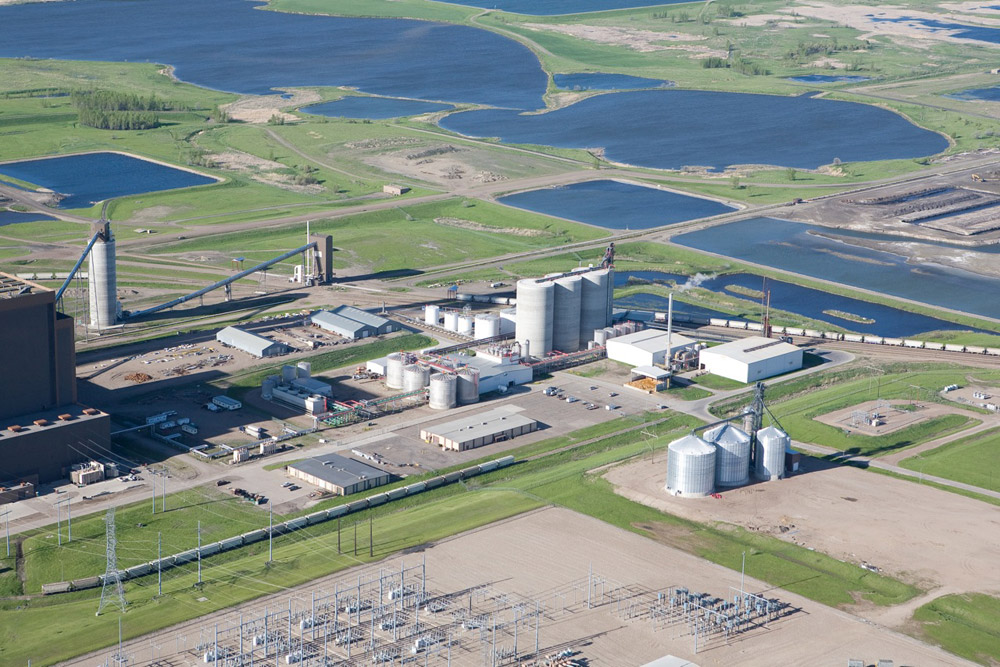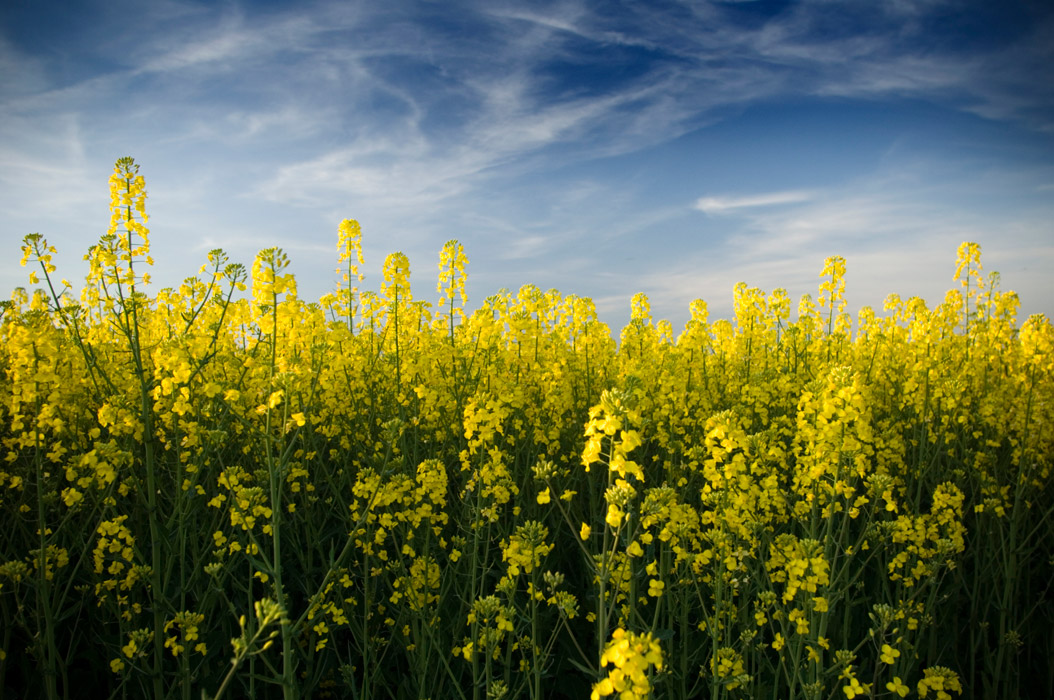What Biomass is:

- BiomassBio means life. includes all plant and animal matter (organic matter).
- Biomass is a renewable energy source because more of it can be grown in a short time.
- Examples of biomass are wood and corn
Fossil fuels (petroleum, natural gas) were made from organic matter but are not biomass because they are not renewable. Fossil fuels took millions of years to develop and cannot be replaced.
 National Biomass Resources This map was created by the National Renewable Energy Laboratory for the US Department of Energy.
National Biomass Resources This map was created by the National Renewable Energy Laboratory for the US Department of Energy.- Biomass can be used to generate various forms of energy such as heat, electricity, and biofuels.Biofuels are fuels produced from plant or animal materials.
- The main biofuels produced in North Dakota are ethanol and biodiesel.
- Biomass is a renewable energy source because more of it can be grown in a short time.
- Ethanol is a grain alcohol made from corn or other biomass.
- It is a clean-burning fuel that is blended with gasoline.
- The more ethanol in the blend, the less pollution is released from the exhaust.
- Ethanol prevents winter gas line freeze-up in vehicles.
- The most common blends of ethanol fuel are E10, E20, E30, and E85. E15 is also available in North Dakota.
- E stands for the percentage of ethanol in the fuel. Example: E20 contains 20% ethanol and 80% gasoline (20% + 80% = 100%).
- E10 is safe to use in all cars, trucks, lawn mowers, etc. E20, E30, and E85 can only be used in certain types of vehicles called flex fuel vehicles.

- Biodiesel is a biomass fuel produced from crop oil or vegetable oil.
- Biodiesel can safely be used in any diesel engine.
- Most buses, trucks, and tractors run on diesel fuel.
- Biodiesel is often blended with petroleum diesel in ratios of 2% (B2), 5% (B5), or 20% (B20).
- Pure biodiesel (B100) contains no petroleum diesel.
- Biodiesel can safely be used in any diesel engine.
Ethanol production in North Dakota:

Blue Flint Ethanol Blue Flint Ethanol is the first co-located biorefinery in the world. That means that the ethanol plant is located next to Coal Creek Station and purchases steam from the power plant to be as efficient as possible. Photo courtesy of Blue Flint Ethanol.
- Corn is used in ethanol production in North Dakota.
- About 140 million bushelsA bushel is a unit of measure that equals 128 cups. A bushel of shelled corn weighs about 56 pounds. of corn are used each year to make ethanol in North Dakota.
- The type of corn used for making ethanol is field corn (used to feed animals) not sweet corn that people eat.
- One bushel of corn produces 2.8 gallons of ethanol and 18 pounds of leftover corn products.
- The leftover corn products are made into animal feed.
- Five ethanol plants are located in North Dakota.
- Blue Flint Ethanol at Underwood
- Hankinson Renewable Energy at Hankinson
- Red Trail Energy at Richardton
- Tharaldson Ethanol at Casselton
- Dakota Spirit AgEnergy at Spiritwood
- North Dakota's ethanol plants produce nearly 450 million (450,000,000) gallons of ethanol per year as of 2017.
- About 10 percent of the North Dakota ethanol is blended with gasoline and sold in North Dakota.
- The other 90 percent is shipped to other states.
 Canola: is an oilseed crop that was developed by two scientists from Canada. Canola seeds are about 40 percent oil. The name canola was made up from the words “Canada” and “oil.” North Dakota grows more canola than any other state in the United States.
Canola: is an oilseed crop that was developed by two scientists from Canada. Canola seeds are about 40 percent oil. The name canola was made up from the words “Canada” and “oil.” North Dakota grows more canola than any other state in the United States. - About 10 percent of the North Dakota ethanol is blended with gasoline and sold in North Dakota.
Biodiesel production in North Dakota:
- North Dakota has one biodiesel plant.
- The ADM Company operates a biodiesel plant at Velva.
- Canola is used in biodiesel production at the Velva plant.
- The biodiesel plant at Velva has the ability to produce 85 million (85,000,000) gallons of biodiesel per year.
- When the Velva plant is not producing biodiesel, it crushes canola for cooking oil and oilseed proteins.
Canola is an oilseed crop that was developed by two scientists from Canada. Canola seeds are about 40 percent oil. The name canola was made up from the words "Canada" and "oil." North Dakota grows more canola than any other state in the United States.
How the production of biofuels affects the people of North Dakota:
- The biofuels industry contributes to the economy of North Dakota.
- The ethanol industry generates more than $640 million ($640,000,000) each year.
- North Dakota drivers save money at the gas pumps by using ethanol.
- Numerous job opportunities are available in the biofuels industry.
- More than 200 workers are employed in North Dakota ethanol plants.
- The average worker earns about $64,000 per year.
- Examples of jobs include scientific work, operating machinery, repairing and maintaining equipment, working in a laboratory, and office work.
- The biofuels industry benefits North Dakota farmers.
- About 80 percent of the corn used in the state's ethanol plants is purchased from North Dakota farmers.
- The demand for corn to make ethanol has increased the price, so farmers are making more money from corn.
- Farmers can burn cleaner fuel for their trucks and tractors.
- Each bushel of corn used to create ethanol produces about 18 pounds of feed for farm animals.
- About 80 percent of the corn used in the state's ethanol plants is purchased from North Dakota farmers.
- Biofuels are "cleaner" fuels than petroleum-based fuels, and biofuels are renewable.


